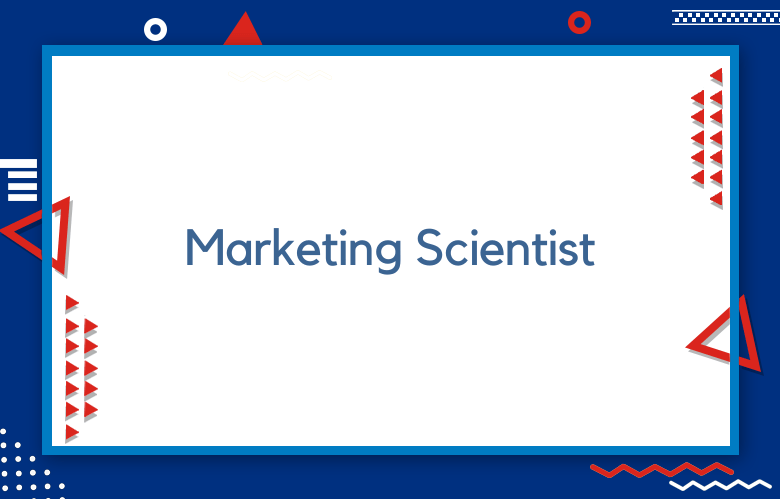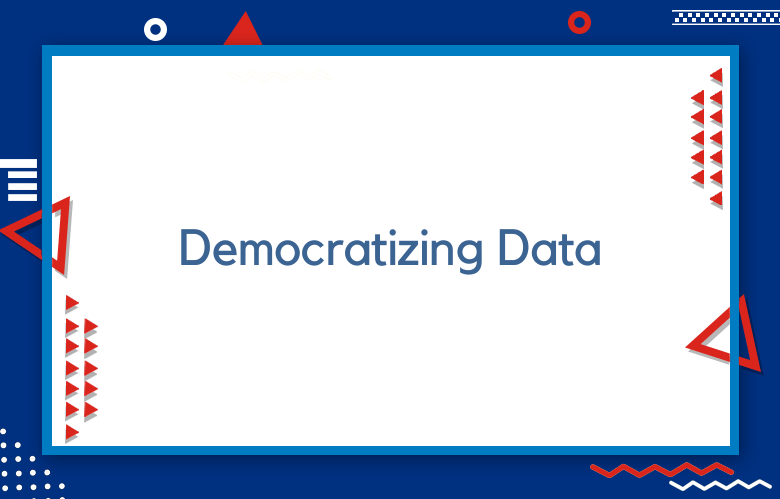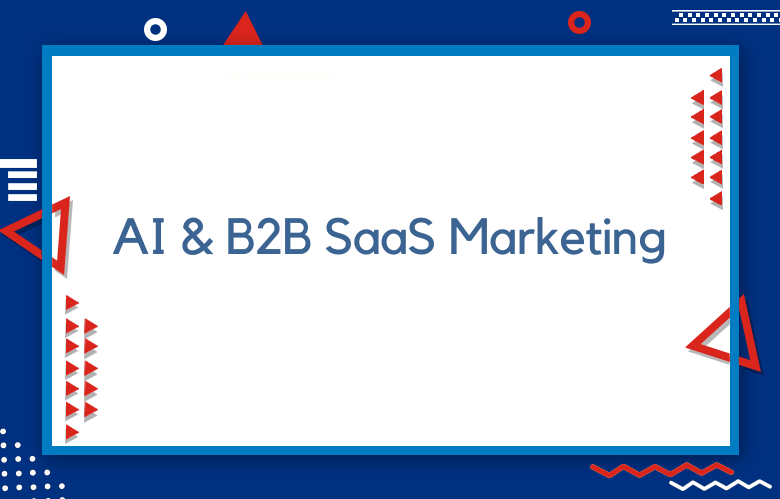Marketing Scientist: The Role of Psychology in Marketing Science

Effective marketing campaigns are about more than just implementing digital strategies, creating content that resonates with your target audience, and measuring ROI. It’s more than that – marketing requires understanding human behavior and what drives consumer decisions.
As such, marketers must think like psychologists to craft campaigns that tap into their target audience’s emotions, values, and needs. This is where Marketing Scientists come in – they apply scientific methodologies and psychological principles to improve marketing effectiveness.
Marketing science has come a long way since its inception in the mid-20th century. Today, we have access to vast amounts of data that can help us better understand consumer behavior and uncover patterns and insights that can inform better marketing decisions.
But data alone can only take us so far. We must turn to psychology to understand consumer behavior and what drives their decision-making. Explore why psychology is critical to marketing science.
What do Marketing Scientists do?
Marketing Scientists play a pivotal role in analyzing and understanding complex data about consumer behavior, market trends, and industry insights.
By utilizing cutting-edge scientific methodologies and advanced statistical techniques, Marketing Scientists uncover valuable insights that enable businesses to make informed decisions regarding their marketing strategies and branding initiatives.
These professionals are highly skilled in the art of data analytics and have a deep understanding of consumer psychology, market research, and social media dynamics. They can aggregate data from multiple sources, analyze it comprehensively, identify key trends, and extract impactful insights.
Marketing Scientists employ advanced analytical tools such as predictive modeling, machine learning, and artificial intelligence to identify customer preferences, forecast market trends, and optimize marketing campaigns.
These insights help businesses to refine their target audience, develop more effective messaging, and enhance customer engagement.
Scientific Marketing Management
Scientific marketing management is a marketing approach that utilizes a rigorous and empirical approach to decision-making. This approach is grounded in analyzing and understanding relevant data, which aids marketers in creating more effective marketing strategies and campaigns.
One of the primary benefits of scientific marketing management is that it enables marketers to make more informed decisions when identifying and targeting customer segments.
Through data analysis, marketers can identify demographic variables, psychographic characteristics, consumer behaviors, and other meaningful insights that provide a more accurate picture of target audiences.
This information can then be used to create marketing campaigns that are more effective in terms of reach, engagement, and conversion.
How to Apply Data Science in Marketing
Data Science and Marketing are two fields that have become inseparable in today’s business world.
Data Science uses advanced statistical and computational techniques to extract knowledge and insights from complex data sets. On the other hand, Marketing is the process of promoting and selling products or services to customers.
By combining the power of Data Science and Marketing techniques, businesses can gain a significant competitive advantage by making data-driven decisions and providing customers with personalized experiences.
Here are some ways businesses can apply Data Science in Marketing:
Customer Segmentation
Data Science can help businesses segment customers based on demographics, purchase history, and online behavior.
This enables businesses to create targeted and personalized marketing campaigns that resonate with each customer segment, improving their ROI.
Predictive Analytics
Predictive models can be built using Data Science techniques to forecast customer behavior. These models can help businesses identify customers likely to churn or make a purchase and take appropriate actions to retain or upsell them.
Attribution Modeling
Attribution modeling assigns credit to different marketing channels for a customer’s purchase or conversion.
By applying data science techniques such as data mining, machine learning, and regression analysis, businesses can accurately allocate marketing spending to the channels that generate the most revenue.
A/B Testing
A/B testing compares two marketing campaign versions to determine which one performs better.
Data Science techniques can be used to analyze the results of A/B tests and provide insights into optimizing marketing campaigns for better performance.
Sentiment Analysis
Data Science can analyze customer feedback and sentiment on social media platforms, review sites, and other channels.
This helps businesses understand how customers perceive their brand, products, and services and take appropriate actions to improve customer satisfaction.
In conclusion, Data Science can be a game-changer for businesses looking to improve their marketing efforts.
By leveraging the power of Data Science techniques, businesses can better understand their customers and create personalized experiences that drive engagement and revenue.
Data Analytics for Marketers
Data analytics has become a critical component in the marketing industry in recent years. By leveraging data, marketers can gain valuable insights into consumer behavior, preferences, and trends, which they can use to drive effective marketing campaigns.
One of the significant benefits of data analytics is that it allows marketers to understand their customers better. Marketers can develop a more accurate profile of their target audience by analyzing data from various sources like social media, website traffic, and consumer surveys.
They can learn about their customers’ demographics, geographic locations, and purchasing habits. With this valuable information, marketers can tailor their marketing messages and promotions to resonate with their target audience more effectively.
The Role of Psychology in Marketing Science
The role of psychology in marketing science must be considered. This is because marketing is primarily based on understanding consumer behavior and preferences.
Psychology, on the other hand, seeks to understand the human mind and behavior. Therefore, it is only natural that the two fields overlap.
One of the ways psychology is used in marketing science is through the study of consumer psychology. This involves understanding how consumers think and feel about particular products or services.
When this information is gathered, marketers can tailor their marketing strategies to appeal to consumers’ emotions and desires.
Another way psychology is used in marketing science is through data analytics. Marketers can gain insight into consumers’ buying patterns and behaviors by analyzing consumer data.
Building a Data-Driven Marketing Strategy
Building a solid and effective marketing strategy requires a data-driven approach. By utilizing data and analyzing its various patterns and trends, businesses can create a marketing plan specifically tailored to their target audience.
This can help increase ROI, improve customer engagement, and drive more sales.
One key factor in developing a successful data-driven marketing strategy is tracking and monitoring various metrics.
This includes data points such as website traffic, click-through rates, conversions, and customer feedback.
By doing this, businesses can gain valuable insights into what their customers are looking for and what marketing strategies are most effective in driving sales.
Another critical aspect of building a data-driven marketing strategy is to segment your target audience. Businesses should analyze their customer database and group customers based on demographics, purchasing history, and online behavior.
Data Visualization Techniques for Marketing Scientists
Data visualization techniques have become crucial for marketing scientists in recent years. With the constant influx of data generated by businesses, these techniques offer a powerful way to make sense of vast amounts of information and identify insights that are often invisible when presented in raw form.
Marketing science’s most commonly used data visualization techniques include line charts, scatter plots, bar charts, and heat maps.
Line charts help track changes over time, while scatter plots are great for identifying correlations between variables. Bar charts are ideal for comparing different groups, and heat maps offer a powerful way to visualize complex data sets with multiple variables.
Another critical aspect of data visualization in marketing science is interactive visualization tools. These tools enable analysts to manipulate data visually and identify patterns and insights that may not be apparent in static charts and graphs.
Using Machine Learning for Customer Segmentation
Machine Learning has revolutionized the way businesses approach customer segmentation. By using algorithms that can detect patterns and predict consumer behavior, companies can target their marketing efforts towards specific groups, increasing the effectiveness of their campaigns and ultimately boosting revenue.
One of the key benefits of using Machine Learning for customer segmentation is the ability to identify hidden patterns in consumer data that may not be immediately apparent to human analysts.
Machine Learning algorithms can analyze vast amounts of data to identify factors such as spending habits, purchase history, demographics, and psychographic profiles. This allows businesses to create more accurate customer segments and tailor their messaging to appeal to specific groups.
Mastering A/B Testing for Effective Campaigns
As the world of digital advertising grows increasingly competitive, A/B testing has become an essential tool for any marketer looking to run effective campaigns.
With A/B testing, marketing professionals can compare the performance of two or more campaign variations to determine which version resonates most with their audience.
This data-driven approach allows marketers to optimize their campaigns to achieve better results, save on ad spend, and improve conversion rates.
To master the art of A/B testing for effective campaigns, marketers must deeply understand their target audience.
Marketers can use user surveys, market research, and analytics tools to pinpoint what motivates their audience and what messaging resonates with them most.
Armed with this information, marketers can create variations of their campaigns that specifically target these factors and measure which ones perform best.
Real-Life Examples of Marketing Science Impact
Marketing science has numerous real-life applications that help businesses to make informed decisions about their marketing strategies. Here are a few examples of how enterprises are leveraging marketing science to achieve their goals:
Personalized Marketing
Marketing science has helped businesses to develop personalized marketing campaigns based on customer data.
By analyzing customer preferences and behaviors, businesses can tailor their marketing messages to meet the individual needs of their customers.
For example, e-commerce giant Amazon analyzes customer data to recommend products most likely to interest the customer, increasing the likelihood of a purchase.
Predictive Analytics
Marketing science is also used to develop predictive analytical models that help businesses anticipate future trends and customer behavior.
For instance, companies like Netflix and Spotify have developed models that predict what movie or song a user wants to watch or listen to next based on their viewing or listening history.
Customer Segmentation
Marketing science has also enabled businesses to segment their customers based on demographic, psychographic, and behavioral characteristics.
This helps businesses to develop targeted marketing strategies that resonate with specific customer groups.
For example, luxury car manufacturers segment their customers based on income level, age, and lifestyle to develop targeted marketing campaigns that appeal to their specific customer groups.
Social Media Marketing
Marketing science has also revolutionized social media marketing by providing businesses with tools to measure the effectiveness of their social media campaigns.
Businesses can track engagement levels, measure brand visibility, and identify customer sentiment by analyzing social media data. This data is then used to optimize social media campaigns and improve customer engagement.
In conclusion, marketing science is transforming the way businesses approach marketing. By providing data-driven insights, companies can make informed decisions about their marketing strategies, target the right customers, and improve customer engagement levels.
These real-life examples demonstrate the significant impact that marketing science is having on business success.
How Data-Driven Insights Transformed a Marketing Campaign
The importance of data-driven insights in transforming a marketing campaign cannot be overstated. In today’s digital age, where almost everything is measurable, organizations that want to derive meaningful results must leverage the power of data analysis.
Incredibly, data-driven insights have transformed many marketing campaigns by providing valuable information on customer behaviors, preferences, and purchase patterns.
In a recent case study, ABC Retail, a leading online electronics store, sought to improve its marketing campaign by leveraging data-driven insights.
The company knew it had to engage its customers more effectively on social media to increase online sales. However, unlike its competitors, ABC Retail struggled to generate the necessary traction despite spending money on ads and content creation.
The Fundamentals of Marketing Science
Marketing science is a field of study that encompasses various analytical and empirical methodologies used to identify, measure, and analyze marketing phenomena. Applying the scientific method to marketing activities and decisions helps increase the effectiveness and efficiency of marketing efforts.
Marketing science is based on fundamental principles, including customer value, the importance of data and metrics, and experimentation and modeling techniques to test marketing hypotheses. Customer value is at the core of marketing science, and it refers to the perceived benefits that customers derive from a product or service relative to the cost of the product or service.
Exploring the Relationship Between Marketing and Data Science
Marketing and data science are two fields with different purposes, but in reality, they complement each other.
Data science is about using mathematical and statistical methods to analyze large datasets, while marketing is all about understanding consumers and promoting products or services.
By combining these two areas of expertise, it is possible to develop a more effective marketing strategy that targets the right people with the right messages.
One of the critical ways marketing can benefit from data science is by leveraging the vast amounts of consumer data that are now available. With the rise of e-commerce, social media, and other online platforms, companies have access to unprecedented information about their customers.
By analyzing this data, marketing teams can gain insights into consumer behavior and preferences and use this information to tailor their messaging and promotions to specific population segments.
Demystifying Statistical Concepts for Marketers
Marketers must understand statistical concepts to make well-informed decisions as the world becomes increasingly data-driven.
Unfortunately, for many marketers, statistical concepts can be confusing and intimidating. But fear not; demystifying statistical concepts is essential for marketers to succeed in today’s data-driven world.
First and foremost, it is essential to understand the basic statistical terms. The most commonly used words in statistics include mean, median, mode, standard deviation, correlation, regression, and probability. Marketers can more effectively analyze and interpret data by fully grasping these terms and their meanings.
Marketers must understand the difference between correlation and causation.
Correlation refers to two variables that are connected somehow, while causation implies that one variable causes a change in another. Marketers must be cautious not to infer causation from correlation, as other variables may be at play.
Predictive Analytics in Marketing
As the marketing field evolves and adapts to changing customer demands, predictive analytics has become an increasingly valuable tool for businesses looking to stay ahead of the curve.
Predictive analytics involves using statistical algorithms and machine learning techniques to analyze large amounts of data and make informed predictions about future events.
One of the main benefits of predictive analytics in marketing is the ability to target better and personalize marketing efforts.
By analyzing customer behavior, preferences, and demographics data, businesses can tailor their marketing campaigns to specific audiences and increase the effectiveness of their outreach efforts. This can increase customer engagement, higher conversion rates, and more significant revenue growth.
Challenging Common Assumptions in Marketing Science
Marketing science is a field that uses scientific methods and theories to understand better consumers’ behavior and the impact of marketing efforts.
However, the assumptions in this field are only sometimes accurate and may need to be challenged to improve the discipline’s insights. In this regard, it is crucial to delve deeper into the concepts and facts that drive marketing science forward.
One common assumption in marketing science is that consumers act rationally when making purchasing decisions. While this may be true for some individuals, it is far from a universal truth. Emotional impulses, social influences, and past experiences can all influence a consumer’s behavior and decision-making process.
Data-Driven Vs. Intuition-Based Marketing
In today’s ever-changing marketing world, professionals are faced with a daunting decision as to whether to rely on data-driven or intuition-based marketing strategies. Both approaches have strengths and weaknesses, and the final decision should be made based on the situation.
Data-driven marketing involves utilizing analytical tools and technologies to collect and analyze data to make informed decisions. This approach relies heavily on statistics and allows marketers to make strategic decisions based on concrete evidence rather than gut feelings.
On the other hand, intuition-based marketing relies heavily on the marketer’s personal experiences, perceptions, and instincts. This approach can be advantageous when data is lacking or quick decisions must be made.
Comparison: Traditional Marketing Vs. Marketing Science
Traditional marketing refers to various marketing strategies businesses have utilized for decades, such as TV advertisements, print media, and billboards.
This marketing approach was based on trial and error and guesswork, which left businesses with no definite data on the success of their marketing campaigns.
On the other hand, marketing science is a data-driven marketing approach that leverages technology and statistics.
Marketing science involves analyzing customer data, conducting market research, and advanced analytics, which helps businesses target their marketing efforts more precisely.
The data gathered through marketing science can be used to assess and optimize campaign success, make informed decisions, and predict future trends.
Key Metrics Every Marketing Scientist Should Monitor
Marketing scientists primarily analyze and interpret data to provide actionable insights that help businesses make informed decisions.
To achieve this, they must constantly monitor key metrics that help them understand the performance and effectiveness of marketing strategies.
One of the critical metrics that marketing scientists should track is the Conversion Rate. This metric measures the percentage of website visitors who take a desired action, such as purchasing or filling out a form.
By monitoring this metric, marketing scientists can identify which marketing channels or campaigns are most effective in driving conversions and optimize their strategies accordingly.
Another critical metric to monitor is the Customer Acquisition Cost (CAC). This metric measures the cost of acquiring a new customer for a business. By tracking the CAC, marketing scientists can determine the most cost-effective marketing channels and campaigns and allocate resources accordingly.
Emerging Trends in Marketing Science
Technological developments and consumer behavior dynamics have significantly transformed marketing science in recent years. As a result, there are now emerging trends in the field that are changing the way marketers approach their craft.
One such trend is using artificial intelligence (AI) and machine learning algorithms to create more sophisticated and targeted marketing strategies.
AI allows marketers to collect vast customer data, including likes, dislikes, and preferences.
This information can create personalized marketing campaigns catering to customers’ needs and interests. Machine learning algorithms help to analyze this data, allowing marketers to adjust their strategies based on real-time feedback.
Top Data Sources for Marketing Analytics
Marketing analytics is a vital component of modern businesses as it helps organizations understand their target audience, measure the effectiveness of their marketing campaigns, and improve overall marketing strategies.
To facilitate marketing analytics, businesses require comprehensive and reliable data sources that provide valuable insights into their customers, market trends, and competitors. Here, we highlight some of the top data sources for marketing analytics.
Google Analytics
Google Analytics is a widely used web analytics service that provides comprehensive data on website traffic, user behavior, and conversion rates.
It allows businesses to track the performance of their website and marketing campaigns in real-time, giving valuable insights into the effectiveness of different marketing techniques.
Social Media Analytics
Social media platforms like Facebook, Twitter, and Instagram offer invaluable insights into customers’ behaviors and preferences.
Through social media analytics, businesses can monitor their brand’s reputation, track engagement, and measure the success of social media campaigns.
CRM Analytics
Customer Relationship Management (CRM) analytics track valuable customer data such as purchase history, interactions, and overall customer satisfaction.
This data source helps businesses to segment their customers, identify patterns, and personalize marketing campaigns based on customer preferences.
Market Research
Market research is an essential data source for marketing analytics, providing businesses with valuable insights into market trends, consumer preferences, and industry developments.
This data helps businesses to make informed decisions regarding their marketing strategies and identify potential growth opportunities.
Competitive Intelligence
Competitive intelligence data collects information about a business’s competitors and industry insights. These insights help companies to identify potential threats and opportunities in the market and optimize their marketing strategies accordingly.
In conclusion, successful marketing analytics requires businesses to have access to comprehensive and reliable data sources that provide insights into customers, market trends, and competitors.
By leveraging the above data sources, businesses can make informed decisions and develop effective marketing strategies that drive growth.
Common Myths About Data Science in Marketing
Data science has become an integral part of modern marketing, enabling marketers to understand better and engage with their target customers.
However, there are still common myths about data science and its role in marketing. Here, we debunk some of the most prevalent myths and provide factual evidence to help marketers make more informed decisions:
Myth #1: Data Science is Only for Large Companies with Big Budgets
While it is true that large companies with deep pockets have more access to data and resources, data science is no longer the exclusive domain of big brands.
With the advent of cloud-based tools and open-source software, even small and mid-sized organizations can leverage data science to gain competitive advantages.
Myth #2: Data Science is a One-size-fits-all Solution
Data science is a broad and complex field requiring an understanding of statistics, mathematics, computer science, and domain expertise.
There is no one-size-fits-all solution for data science, as different marketing challenges require different approaches and techniques. Marketers must work with data scientists to identify the right strategy and tools that fit their unique needs.
Myth #3: Data Science Can Replace Human Intuition and Creativity
While data science can provide valuable insights and inform decision-making, it must maintain human intuition and creativity. Marketers must use data-driven insights, experience, and knowledge to make informed and strategic decisions.
Myth #4: Data Science is Only for Analyzing Past Performance
While data science is commonly used for analyzing past performance and predicting future outcomes, its potential goes beyond that.
Data science can be used to identify new customer segments, inform product development, evaluate marketing campaigns, and more. With the correct data and techniques, data science can help marketers identify new opportunities and drive business growth.
Myth #5: Data Science Can Solve All Marketing Problems
Data science is a powerful tool but is only a silver bullet for some marketing challenges. Marketers must identify clear and specific goals and metrics and work with data scientists to develop targeted solutions that address these goals.
While data science can provide insights and recommendations, it is ultimately up to marketers to use these insights to make informed decisions and drive business results.
In conclusion, data science is a valuable tool for modern marketing, but it is essential to separate fact from myth. By working with data scientists and leveraging the latest tools and techniques, marketers can harness the power of data to understand their customers better, inform decisions, and drive business growth.
Conclusion
In conclusion, marketing science is an evolving field requiring marketers to think scientifically about creating and executing campaigns. Psychology is a vital component of marketing science.
Marketers who invest time and resources into understanding human behavior and what drives consumer decisions will reap the rewards of successful campaigns.
By leveraging marketing scientists’ insights, companies can take a data-driven marketing approach and create emotional, personalized campaigns that resonate with their target audience.
Marketing science and psychology are natural partners, as both seek to understand consumer behavior and what drives decision-making.
By incorporating principles of psychology into marketing science, we can create more effective campaigns that resonate on a deeper level with our audience.
Whether we’re seeking to understand consumer motivations, tap into emotional triggers, create better user experiences, influence consumer perceptions, or build genuine connections, psychology has much to offer the marketing science world.
Call: +91 9848321284
Email: [email protected]



